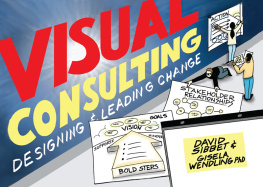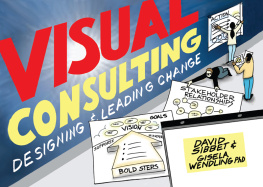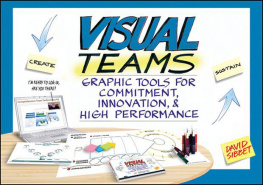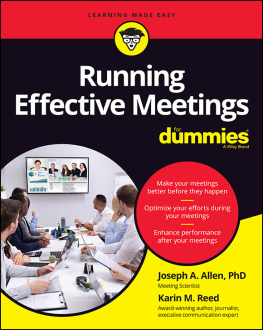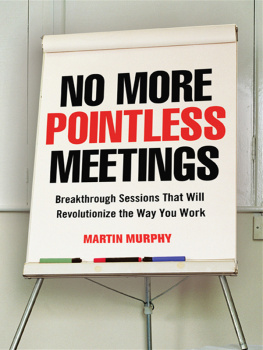Table of Contents
Copyright 2010 by The Grove Consultants International. All rights reserved.
Published by John Wiley & Sons, Inc., Hoboken, New Jersey.
Published simultaneously in Canada.
No part of this publication may be reproduced, stored in a retrieval system, or transmitted in any form or by any means, electronic, mechanical, photocopying, recording, scanning, or otherwise, except as permitted under Section 107 or 108 of the 1976 United States Copyright Act, without either the prior written permission of the Publisher, or authorization through payment of the appropriate per-copy fee to the Copyright Clearance Center, Inc., 222 Rosewood Drive, Danvers, MA 01923, (978) 750-8400, fax (978) 646-8600, or on the web at www.copyright.com. Requests to the Publisher for permission should be addressed to the Permissions Department, John Wiley & Sons, Inc., 111 River Street, Hoboken, NJ 07030, (201) 748-6011, fax (201) 748-6008, or online at http://www.wiley.com/go/permissions.
Limit of Liability/Disclaimer of Warranty: While the publisher and author have used their best efforts in preparing this book, they make no representations or warranties with respect to the accuracy or completeness of the contents of this book and specifically disclaim any implied warranties of merchantability or fitness for a particular purpose. No warranty may be created or extended by sales representatives or written sales materials. The advice and strategies contained herein may not be suitable for your situation. You should consult with a professional where appropriate. Neither the publisher nor author shall be liable for any loss of profit or any other commercial damages, including but not limited to special, incidental, consequential, or other damages.
For general information on our other products and services or for technical support, please contact our Customer Care Department within the United States at (800) 762-2974, outside the United States at (317) 572-3993 or fax (317) 572-4002.
Wiley also publishes its books in a variety of electronic formats. Some content that appears in print may not be available in electronic books. For more information about Wiley products, visit our website at www.wiley.com.
Library of Congress Cataloging-in-Publication Data:
Sibbet, David.
Visual meetings : how graphics, sticky notes, and idea mapping can transform group productivity / David Sibbet.
p. cm.
Includes bibliographical references and index.
ISBN 978-0-470-60178-5 (pbk); ISBN 978-0-470-90104-5 (ebk)
1. Teams in the workplace. 2. Business meetings. 3. Visual communication. I. Title.
HD66.S564 2010
658.456dc22
2010014480
For my children and grandchildren, the sons and daughters of our Grove team, all the young people my poet wife Susan teaches, and all the other young people who will be taking civilization on the next part of its journey.
Introduction
The Power of Visual Meetings
Do you wish you had a better way to run all the meetings you have? Do you wish you could not only be very productive but also have fun in the process? Is your organization putting pressure on people to be more innovative? These are some of the challenges people who run meetings are facing in the work world. These are some of the needs that gave rise to the practice of visual meetings, and to my desire to share the result of 38 years of running really great meetings all over the world.
But its not the only reason I chose to write this book. Im very concerned about people seeming to be more polarized and disconnected, with civil discourse degrading in democracies and conflict and authoritarianism rising as tempting alternatives. Im also concerned about pressures at work and in the classroom. Responding to the complexity and scale of changes in the economy and the environment is starting to outstrip our capabilities. Running our organization lean, with slim or no travel budgets, and less and less time for real dialogue and engagement is challenging the quality of communications. I think that what I am calling visual meetings is a direct response, as you will see as we go along.
What Is Visual Language & What Are Visual Meetings?
Before going further its important for you to understand what I mean by visual meetings. For 35 years Ive been participating in a creative upwelling in ways of communicating coming from Silicon Valley and the wider San Francisco Bay Area in California, now spreading worldwide. We visual practitioners have been inspired by how architects and designers work, and now with social media by how natural systems organize. Those of us supporting all these developments in organizations have been busy inventing new ways for people to work together. We know people can get a lot more accomplished when collaborating and working together than by themselves. Better tools and methods, while not sufficient without intention and motivation, do provide hopeful ways of facing rising levels of dynamism and change. I share a lot of these with you over the course of the chapters in this book. Youll find a lot of them are very simple and powerful.
Can We Support Being Smarter as Groups?
Alan Briskin, a key leader in the Fetzer Institutes Collective Wisdom Initiative and author of a book by that title, argued that what undermines our ability to work together and be open to our differences is finding that we are no longer able to handle the complexity of what we are facing. In the face of confusion, people at work, and people in meetings, retreat into simplistic explanations and intolerant positions of non-listening.
We visual practitioners have been inspired by how architects and designers work, and now with social media by how natural systems organize.
Showing how visual language and visual listening can be a hopeful response to these kinds of problems is a key motivation for writing this book. As we will see, visualization is a powerful way to resolve confusions in groups that arise from inadequate or conflicting mental models. This is crucial when those models involve our ideas of how work gets done, how teams cooperate, how to make decisions, how to organize, and how to learn. A huge amount of time in meetings is spent working out these differences.
As you will hopefully come to appreciate, much of our understanding of systems and how things work together is represented by imagery, story, and metaphor animated by our experience. Upgrading our ways of thinking will require becoming conscious of all the ways we represent how we think about the world to ourselves and to others. Visual meetings have unusually productive properties in this regard in both providing a safe way to become conscious of our metaphors, and providing creative ways to cocreate new ones.
Power Tools for Effective Meetings
While for many people meetings are a necessary pain, and often have a deserved bad reputation, running effective meetings is possibleand not just effective meetings, but meetings that break through to extraordinary results. There are some very accessible and very powerful tools available. Sharing those having to do with visualization is a primary goal of this book.


